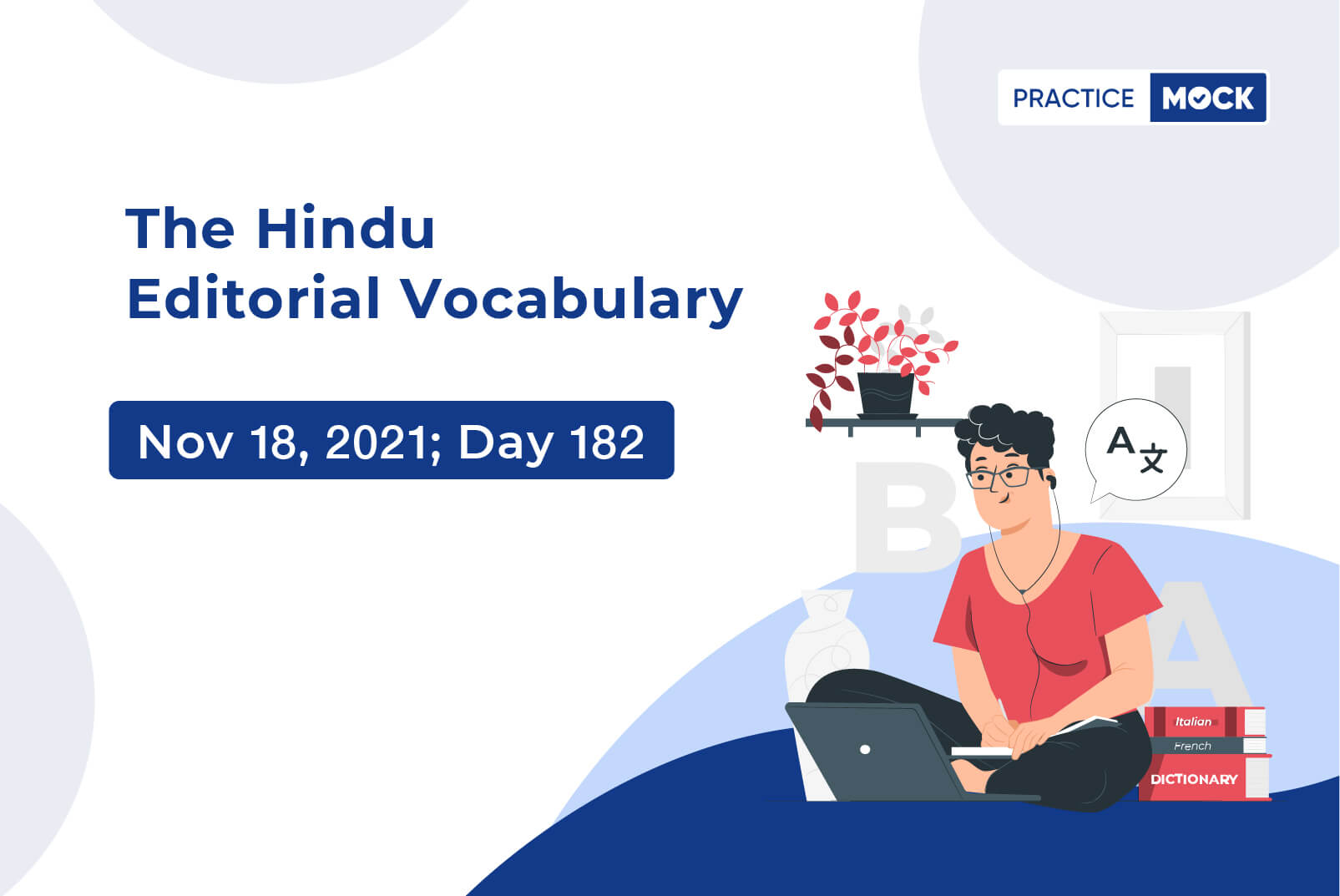| Difficult Word/ Phrase | Contextual Sense |
| Collegium | a group in which each member has approximately equal power and authority |
| Bare | Make public |
| Opaqueness | difficult to understand or explain |
| Puisne | Inferior in rank |
| Incumbent | Currently holding an office |
| Obscure | not discovered or known about |
| Stern | Severe and unremitting in making demands |
| Stinging | (of speech) harsh in tone or character |
| Arbitrary | Based on or subject to individual discretion or preference or sometimes impulse or caprice |
| Dispel | Cause to separate and go in different directions |

Transfer as punishment: On the flawed collegium (a group in which each member has approximately equal power and authority) system
The judiciary’s flawed collegium system bares (Make public) its inherent weaknesses yet again
The most obvious aspect of the functioning of the collegium system of judicial appointments and transfers is its opaqueness (difficult to understand or explain). Decisions that have no explanation, or can only be explained in terms of one’s own perception about the functioning of the judge affected by it, have become quite common. In the latest instance, Chief Justice of the Madras High Court Sanjib Banerjee has been abruptly transferred to head the Meghalaya High Court, the second such instance of the head of a court with a sanctioned complement of 75 judges being asked to take over a court with a strength of four. In September 2019, Justice Vijaya K. Tahilramani resigned after being shifted from Madras to the Meghalaya High Court at a time when she was the country’s senior-most Chief Justice. That one High Court is as important and prestigious as another is not in dispute. And equally acceptable is the premise that the Chief Justice of India is justly empowered to transfer the head of any High Court in the interest of the “better administration of justice”. However, it is not clear why a senior puisne (Inferior in rank) judge in another High Court and due for elevation could not be accommodated there. High Court Chief Justices also play an important role in identifying judicial talent for appointments and streamlining administrative functions. It would be reasonable to expect that a serving Chief Justice is given a tenure long enough in a High Court to discharge these functions effectively. If a Chief Justice is not in line for an elevation to the Supreme Court, a legitimate question arises whether there was sufficient reason to transfer the incumbent (Currently holding an office).
In Justice Banerjee’s case, the transfer has come within 10 months of his assuming office, raising the question whether he was being punished for some obscure (not discovered or known about) reason. In the absence of any assigned reason, or even a known circumstance, there is bound to be speculation on whether his transfer has anything to do with his stern (Severe and unremitting in making demands) approach and stinging ((of speech) harsh in tone or character) oral observations while seeking accountability from the Government and other institutions. The Memorandum of Procedure for judicial appointments and transfers says a proposal to transfer a High Court judge can only be initiated by the CJI, “whose opinion in this regard is determinative”. In addition, the views of “one or more knowledgeable Supreme Court judges” are taken. These views are considered by the five-member Collegium. This system was put in place as a safeguard against arbitrary (Based on or subject to individual discretion or preference or sometimes impulse or caprice) transfers at the instance of the executive. However, recent developments suggest that it may not be enough to dispel (Cause to separate and go in different directions) the impression that a transfer is not exactly based on administrative needs or related to performance. Why any concern relating to a Chief Justice’s style of functioning or conduct should not have been quietly resolved by the CJI without resort to a drastic step such as transfer is not clear. Yet again, the flawed collegium system and its weaknesses are under adverse scrutiny.

- Sign Up on Practicemock for Updated Current Affairs, Free Topic Tests and Free Mini Mocks
- Sign Up Here to Download Free Study Material
Free Mock Tests for the Upcoming Exams
- IBPS PO Free Mock Test 2024
- RBI Grade B Free Mock Test 2024
- IBPS SO Free Mock Test 2024
- NABARD Grade A Free Mock Test 2024
- SSC CGL Free Mock Test 2024
- IBPS Clerk Free Mock Test 2024
- IBPS RRB PO Free Mock Test 2024
- IBPS RRB Clerk Free Mock Test 2024
- RRB NTPC Free Mock Test 2024
- SSC MTS Free Mock Test 2024
- SSC Strenographer Free Mock Test 2024
- GATE Mechanical Free Mock Test 2024
- GATE Civil Free Mock Test 2024
- RRB ALP Free Mock Test 2024
- SSC CPO Free Mock Test 2024
- AFCAT Free Mock Test 2024
- SEBI Grade A Free Mock Test 2024
- IFSCA Grade A Free Mock Test 2024
- RRB JE Free Mock Test 2024
- Free Banking Live Test
- Free SSC Live Test



